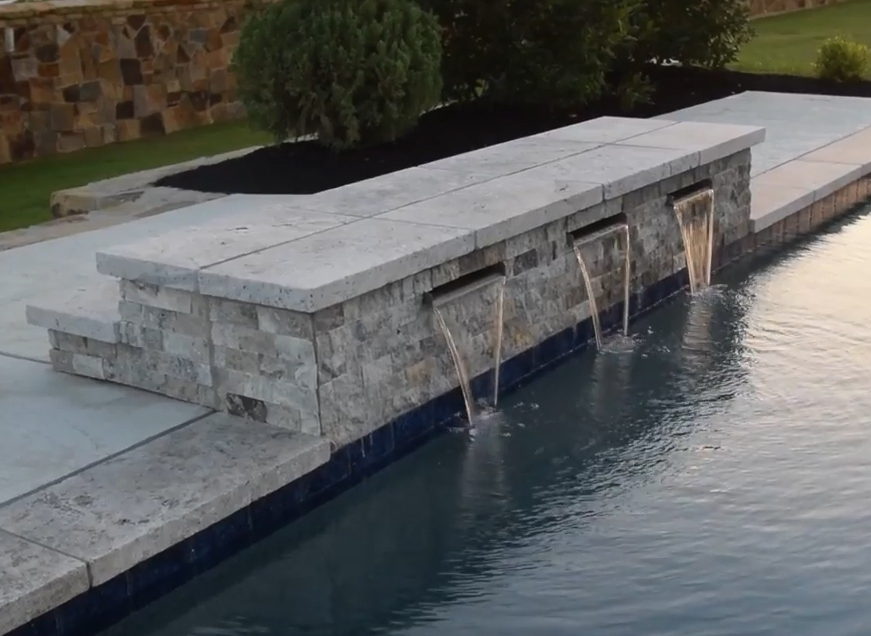#35: Diving Platform

I’ve written on several occasions that I’m not a fan of setting my pools up for diving in general and particularly not of equipping them with diving boards: Those planks are difficult to fit into beauty-oriented designs, seem old fashioned and create all sorts of technical, safety-related issues in design and construction that I discuss in detail in the video linked below. To me, it’s more than enough to put diving boards in the doghouse.
But many people, including some of my clients, want to be able to dive or jump safely into their pools and insist on a diving board. As an alternative, I advocate the formal sort of platform discussed in the video, or maybe a diving rock: Either one a serviceable solution in identifying a specific place where diving is permissible. They’re also popular with kids and, done well, can be a net aesthetic plus in the outdoor environment.
To make any diving system work, of course, every designer and builder needs to know the requirements for contouring the pool’s bottom. I focus on safety and usage issues in the video, but there are other practicalities to consider. For one thing, these points of access mean bigger, deeper pools, generally a bit more costly with more water and more sanitizing treatment. In addition, these pools tend to have less play space simply because the water in the diving zone has to be deep enough to serve as a proper envelope around the diving spot.
Among the two dive-inducing possibilities I am quickest to consider, I like the platform approach more than I do the diving-rock approach. Mainly it’s because the platform itself can make a strong aesthetic statement if you include spillways, water bowls or even fire features to keep up appearances when the platform isn’t being used for jumping or diving.
That’s not to dismiss diving rocks entirely. They can be just the ticket in a naturalistic, boulder-strewn design, for example. But even there, they lack a platform’s easy decorative potential. And yes, a rock can be core-drilled to become a waterfeature as well, but water-spurting rocks can look out of place or even silly, especially when isolated along the wall overlooking the deep end of a pool.
As suggested above, the decision to include diving in a pool design is client-driven and homeowners will have a lot to say about their preferences. I do what I can to push platforms over the other possibilities purely for aesthetic reasons – sometimes I win, but sometimes I’m the one who ends up in the doghouse!
To see a diving platform that won the day, click here.










